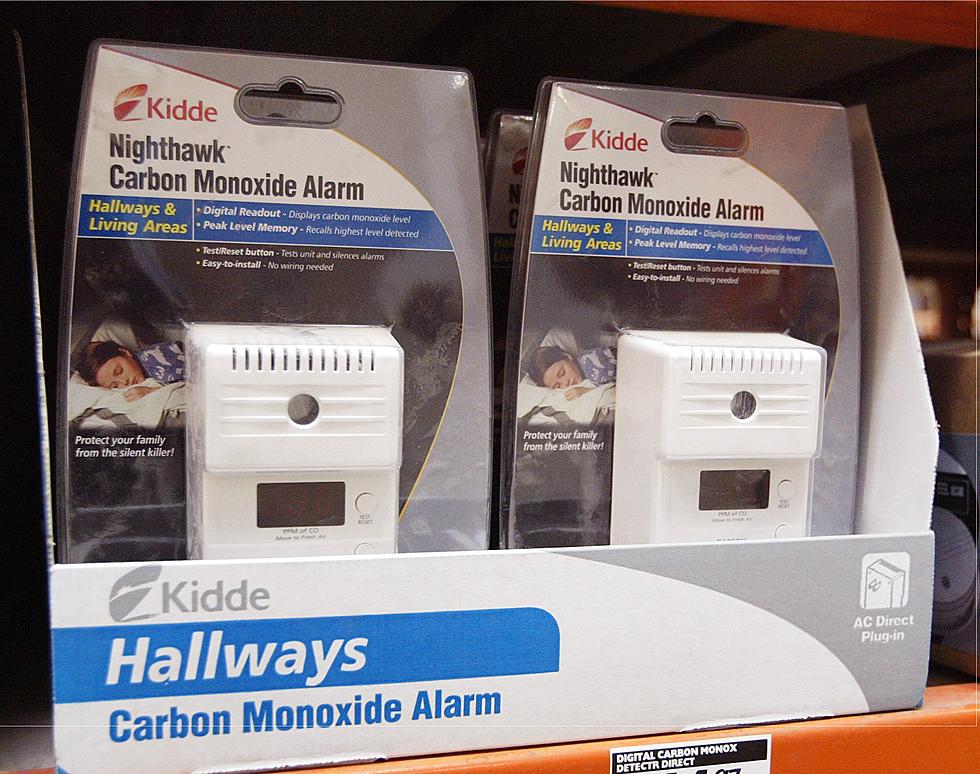
Check your carbon monoxide detectors to prevent poisoning this winter
As we head into the winter months, New Jersey officials are urging residents to make sure their carbon monoxide detectors are in good working order, or to install them if their home doesn't have them.
Why is CO poisoning prevalent in the winter months?
Carbon monoxide, or CO, poisoning is an immediate and deadly danger and is more prevalent in the winter, said Dr. Diane Calello, executive and medical director of The New Jersey Poison Control Center at Rutgers New Jersey Medical School.
Any time an appliance is used to heat, that's generally a result of combustion. Whenever there is combustion, whether a person is burning gas or wood or any source of fuel, it can give off carbon monoxide fumes, said Calello.
If there is not enough ventilation or if there is something wrong with the appliance, it can give off extra carbon monoxide. Dangerous levels of CO gas can build up quickly, poisoning those inside.
Since carbon monoxide is colorless and odorless, it can only be detected by having working detectors.
"When the alarm on your detector sounds, take it seriously and act fast," Calello said.
Sources of carbon monoxide poisoning in the home
There are plenty of things in a home that can give off carbon monoxide fumes, such as a furnace, generator, and car exhaust. Blocked chimneys are a problem too. Debris in the chimney or a fireplace that is used to vent the furnace that heats the home – that can create a carbon monoxide hazard too.
Lesser-known sources of carbon monoxide poisoning include blocked heating and dryer vents, portable room heaters, and smoking hookah in spaces that are too small and have little ventilation.
Symptoms of carbon monoxide poisoning
Calello said the symptoms of carbon monoxide are tricky because they can be confused with symptoms of viral illnesses like the common cold, the flu, and even COVID-19.
Those symptoms include headache, dizziness, weakness, tiredness, upset stomach, vomiting, chest pain, and even confusion.
Preventing a carbon monoxide leak before it occurs
The key to preventing CO poisoning is "working detectors," said Calello.
Detectors can be battery-powered or plugged in, she added. These detectors should be installed on every floor of the home and near bedrooms and in areas where there are gas-powered appliances.
She recommends doing a safety check two times a year to make sure the batteries and the units are working correctly. A good rule of thumb is to check the detectors when changing the time for Daylight Savings in the fall and spring.
Adequate ventilation is also important.
Calello said to make sure the chimney is not blocked, noting it should be cleaned and serviced regularly.
When it comes to space heaters, people should avoid using gas-powered devices. Additionally, safety checks should be performed yearly on furnaces and other appliances that could emit CO.
What to do if a person or pet comes in contact with carbon monoxide fumes
Move to fresh air, said Calello. If there is a carbon monoxide hazard inside, the way to save a person's life in the immediate is to get them outside. Do not stop to open windows. The longer you are inside, the more carbon monoxide you will breathe in.
If the person is not breathing or hard to wake up, get them out of the house and call 911. If a pet was exposed, call an animal hospital or a veterinarian.
The New Jersey Poison Control Center can be reached at 1-800-222-1222 for medical treatment advice. The hotline is open 24/7.
Since Oct. 1, the New Jersey Poison Control Center has helped 66 callers with carbon monoxide exposures.
Light Up New Jersey 2021: Your best holiday lights
First flakes: When does snow season start in NJ?
More From 92.7 WOBM










